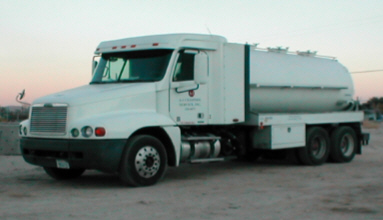

|
|
|
Septic Pumping
Restaurant Grease Drain Line Cleaning
|
Grease Removal DevicesWhen wastewater from food service facilities contains grease, the hot water and soap used in washing dishes and equipment emulsifies or breaks up the grease, allowing it to flow freely through the waste line to the Grease Trap/Interceptor. As the wastewater cools in the trap/interceptor, the grease congeals (forms clumps) and builds up while allowing the water to exit the trap/interceptor leaving the grease within the trap/interceptor. Grease removal devices like interceptors and grease traps are designed to prevent grease-related problems in the sanitary sewer or the leaching system. The built up grease solids must be pumped periodically. Is
my business required Your local wastewater agency probably requires installation of a grease removal device if your wastewater contains grease, oils, fats, sediments, particulate matter, or any other material that can impair the flow of the wastewater through the municipal sanitary sewer.
What if I want to use a different Your wastewater
discharge must meet specific grease discharge limitations that are set by
your service agency. If you believe that your device can meet those limits,
you may submit your plan to your service agency for approval. However, you
may be required to install the standard device, or adhere to your municipal
ordinance or Uniform Plumbing Code for installation of alternative grease
removal devices. What’s
the difference between An interceptor is a big, concrete box partitioned off to remove grease and food waste by trapping things that float and things that settle to the bottom. A grease trap is a smaller unit, often stainless steel, that works by the same principles. Usually, interceptors are installed in the ground outside a food service facility, and grease traps are installed indoors, often under a counter. Grease traps, if approved, are usually reserved for small establishments, and because they’re smaller, may need more frequent service.
|